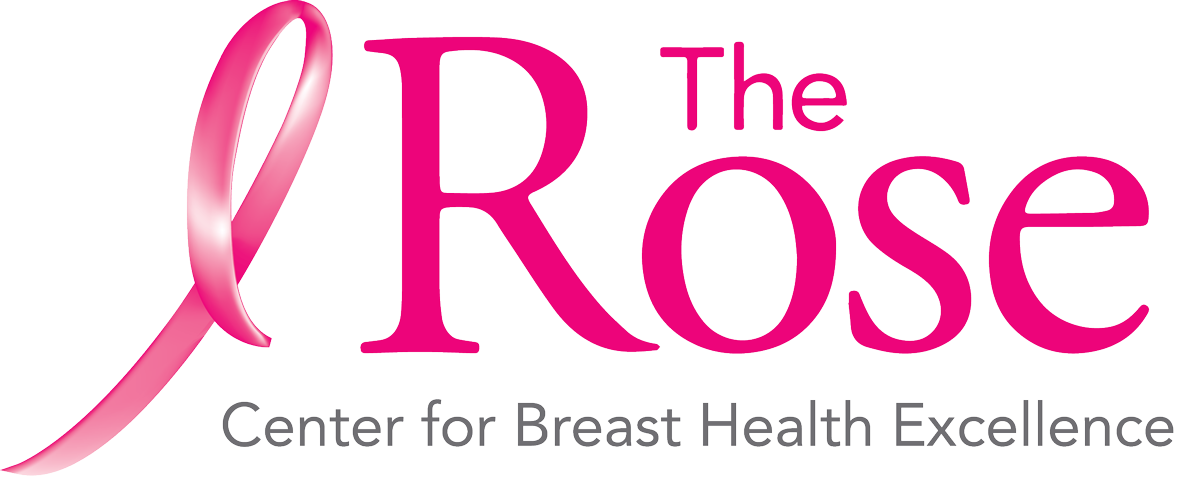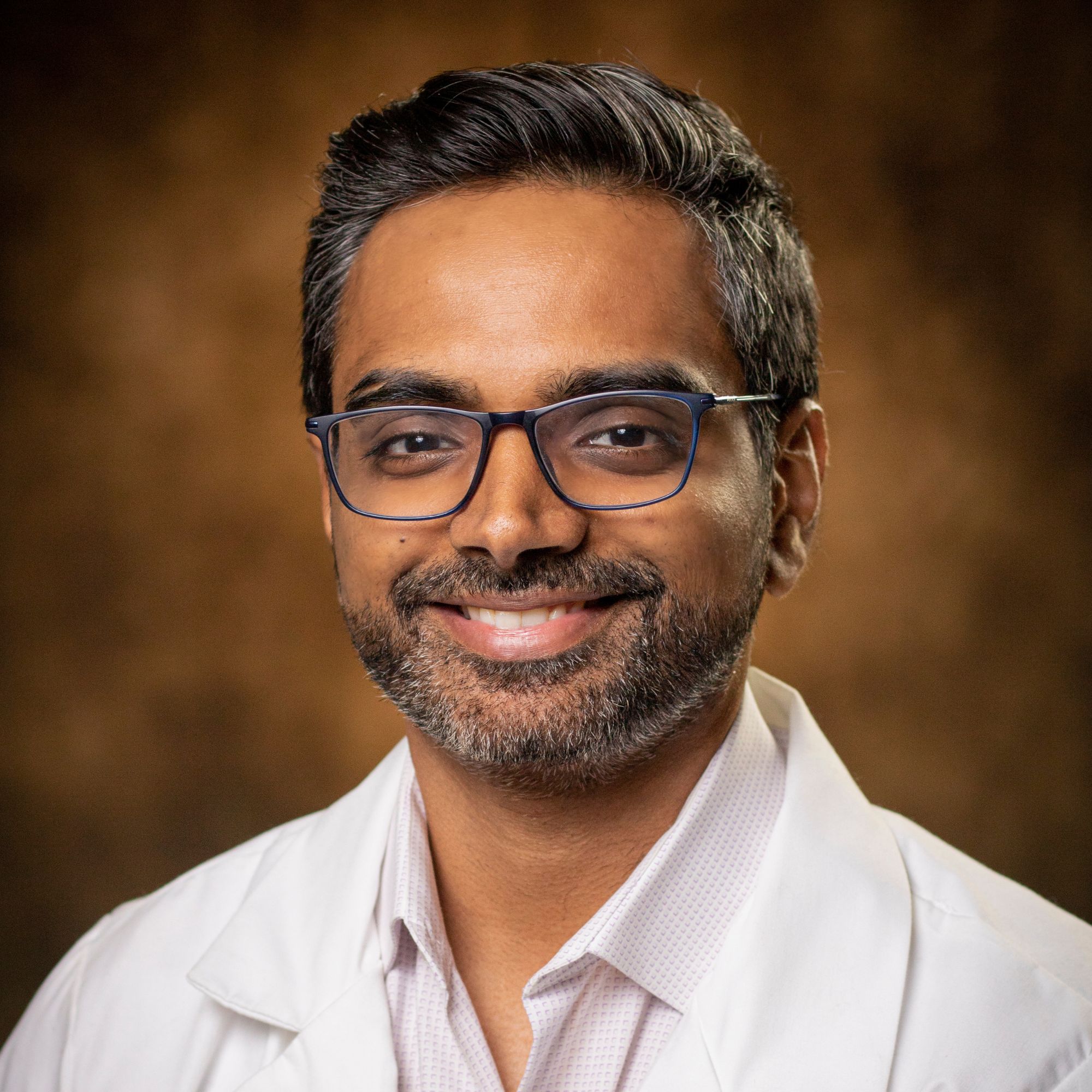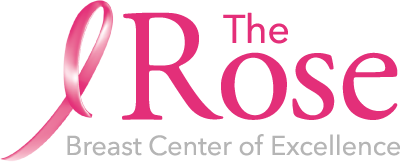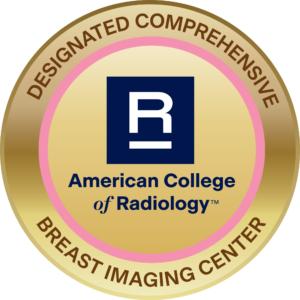Dorothy: [00:00:00] How much of a game changer is breast MRI for high risk women? Dr. Raz joins the podcast to talk about this very subject. He’ll explore why MRI is crucial for early detection and how it compares to mammograms. Dr. Raz talks about the difference between an MRI and a mammogram and how they complement each other, but how very important MRI is to the high risk woman. You know, as he says, when you catch it early, it’s curable. Join us and learn more about how this advanced technique is saving lives.
When you subscribe to our show, you help us grow. Someone you know may need to hear this story. So please share with your family and friends and consider supporting our mission. Your donation can help save the life of an uninsured woman.
Let’s Talk About Your Breast. A different kind of podcast presented to you [00:01:00] by The Rose, Breast Center of Excellence and a Texas treasure. You’re going to hear a frank discussion. Discussions about tough topics, and you’re going to learn why knowing about your breasts could save your life.
Dr. Raz, I hope you are as excited as I am about The Rose having the ability to help to offer Breast MRI. This is just a phenomenal time in The Rose’s life, and our partnership with Live Healthy Imaging?
Dr. Raz: Yes.
Dorothy: Has made it possible. We’re so grateful for them to, for wanting to partner with us, but Breast MRI is a very specialized area. So, what does that mean? When, when do you need to have that done?
Dr. Raz: Right. So, it’s just a medical exam. It’s like a woman gets a mammogram, right? Everybody understands what a mammogram is. It’s an x ray. MRI uses magnetic waves to do imaging. And we’re just imaging the [00:02:00] breast. But why do that? Well, because MRI is one of the most sensitive exams.
Now, what does that mean? Well, that means that you get any exam, you get an x ray. Let’s say you, even if you get a blood test, the job of the exam is to find, do you have a disease or do you not have the disease? for whatever that reason that exam was performed. Well MRI’s job, just like anything in breast imaging, I said, do you have breast cancer or do you not have breast cancer?
And MRI specifically is very good at finding that. Even better than a mammogram. And that’s why it’s one of the most highest sensitive exams, what we call it. Uh, when it comes to detecting breast cancer. Now, who gets it, you said, right? So, Breast MRI is, as of right now, reserved for women that are high risk, you know, and a high risk, and there are some other things I’ll discuss, but high risk means, what’s your lifetime risk of developing breast cancer?
[00:03:00] Um, if you heard previous podcast, we talked about, talked a lot about this, but average American woman at risk is 12.5%. Meaning if you were whatever age you are right now, till if you were to live till 85 or 90, you have 12.5 percent chance of developing breast cancer. It’s fairly high. But what we consider high risk, specifically in breast imaging, is greater than 20 percent chance.
Now that puts you in this bucket, if you want to call that, of high risk women. They’re especially, these women should be screened with MRI because of the high sensitivity. Mammogram is not very good when it comes to these women. We have studied it in multiple studies. Um, so MRI, this specialized exam that uses magnetic waves and radiofrequency, then images of breast and we’re able to tell in these women if you have breast cancer or not.
So high risk women or if you have had previous breast cancer, it’s also very good. If you’ve had chest radiation, you know, people when they’re young, they [00:04:00] may have had mental cell carcinoma or some other cancers that required chest beam radiation. Um, those are very good for screening with breast MRI. Or if you just want evaluation of your implants, you know, plenty of women have silicone implants.
Mammogram and ultrasound are not very good at looking inside the implant, but MRI is. Um, it can tell if there’s an implant that ruptures from the inside, okay? But mammogram ultrasound won’t be able to tell that. Or, um, you know, if you have certain genetic abnormalities, right? BRCA mutation. So those, again, put you in a high risk category, therefore, MRI would be excelent exam for that.
Dorothy: And it is, does dense breast fall in there anywhere?
Dr. Raz: Yes, so dense breast, as we keep studying, right? Neurostudies keep coming forward. Now we’re realizing that dense breast is an independent risk factor for developing breast cancer. So if you have dense breast, you elevate your risk of having breast cancer, right?
[00:05:00] 12.5%, remember that number, but it’s a little bit higher for a woman with dense breast. And the sensitivity, we talked about it again, the exam’s accurate or not, is it able to tell if you have breast cancer or not. The sensitivity drops for mammogram when it comes to women with dense breasts. Now mammogram proliferation boosts it, helps it, but it’s nowhere near MRI. Which is why if you have dense breasts, you can also consider getting breast MRI as a screening tool. Yes.
Dorothy: And, it has to be ordered?
Dr. Raz: Yes.
Dorothy: Primarily by the radiologist?
Dr. Raz: So, the primary care, your physician can order it.
Dorothy: Mm hmm.
Dr. Raz: Now, if you don’t have any insurance, we have Amanda, right? Our awesome, uh, uh, so she can also order, do a good physical exam, order it for you. Um, so there, these are, there are options. And again, if you have any questions, we can help here at The Rose to get the order.
Dorothy: But sometimes when you’re seeing something on a mammogram and you just [00:06:00] really want to be sure are the breasts, particularly dense?
Dr. Raz: Right.
Dorothy: Which is often in younger women and we do a lot of younger women.
Dr. Raz: Yes.
Dorothy: So, that again, that’s relying on radiologists to order it. To say, this would be helpful.
Dr. Raz: That’s correct. So in particular when definitely when we see higher risk women, you know, when we have this scale model, we use different models to determine if you’re high risk or not. When that triggers, you know, we have a process, and we’ll be educating women, giving them pamphlets to talk about breast MRI and see how beneficial that would be for them.
Dorothy: And if it were only two, it actually would find more cancers. Is that true, or?
Dr. Raz: So, if MRI was the primary screening source? Right, so that’s not been established. So that’s why mammogram is the gold standard. So you cannot just skip the line and get to MRI.
Dorothy: Okay, okay.
Dr. Raz: Still gotta get your [00:07:00] mammogram. Very important. Got to get your mammogram because it has shown mortality benefit, meaning it saves lives.
Dorothy: Right.
Dr. Raz: That has been proven scientifically. Now MRI is very good at detecting cancer early, but we’re still in early stages of proving that it actually saves lives, right? And there’s a complex study and process that we, that we do to get to that point. But we know that it definitely does, we just need it in a, in a very long controlled trial.
Dorothy: Which is one reason why it’s just not automatically recommended, even by the Preventive Services Task Force.
Dr. Raz: That is correct. If you were to go to USPSTF’s website and type it in, they’ll say something like, they use verbiage, but they’ll say, “The efficacy of the study has not been established,” or “we do not know the cost benefit of all of this.” what they’re really trying to say is, More studies need to be done.
Dorothy: But of course when it comes to cost benefits, you know, that doesn’t make sense to me life is worth it. But anyway, we want to warn folks that it’s [00:08:00] still being studied even though we already know it’s it’s a benefits.
Dr. Raz: Correct.
Dorothy: So when I when a woman is having an MRI, I a breast MRI then It has to be correlated with a mammogram, right?
Dr. Raz: That is correct.
Dorothy: Or with a palpable area, a clinical area?
Dr. Raz: Yes, right. So just like if you were to get a diagnostic mammogram, if you have a palpable area, put a palpable marker. You can do the same at MRI. You can put a BB marker or a palpable marker, which I’ll be able to tell on an MRI. But yes, absolutely. Mammogram is the base and you cannot get just MRI without that comparison. I mean, plenty of time I’ve seen MRIs you know, there’s stuff on MRI, but I biopsied using mammogram, so that has happened where, so all of these studies, they’re all complement, like they complement each other, in terms of anatomy and not, you know, the information I get from them. So ultrasound, mammogram, MRI, I combine all of that to then get to, hey, there’s this one area, [00:09:00] how do we approach it? What is it?
Dorothy: Right. And you know, that’s in really in all of medicine. You have different studies or different tests. It just seems like people expect in, in breast cancer to have one test that tells it all that’s a hundred percent. And it just doesn’t exist.
Dr. Raz: No, there is no such thing. If you were to, let’s say, just get a mammogram, you will definitely miss subtle small masses. That ultrasound is very good at picking up. If you were to only get ultrasounds, it’s a very comfortable test. Nobody wants to do a mammogram because it’s not very comfortable, well, then you will miss something called DCIS, which is only seen as calcifications, early DCIS, then ultrasound won’t be able to tell. Do you see? So where I’m going with this, like there are certain things and then they’re very subtle cancers that enhance only an MRI, you won’t be able to see on a mammogram and ultrasound. So it really is complementary and you can’t just skip one.
Dorothy: You’re right. Right. Very specialized too. You, you have [00:10:00] to have someone who knows breasts imaging to read right MRI.
Dr. Raz: So that’s why they’re specialized. Yeah, breast imagers, correct
Dorothy: With our partnership with live healthy imaging, we have also the ability to serve uninsured women. We’re not having to have them pay anything when they need it.
Dr. Raz: Yes.
Dorothy: And that’s huge.
Dr. Raz: That is very big.
Dorothy: We have never ever offered a service that we couldn’t offer to both of our populations. And finally, having a partner who’s working with us, and a funder who was very generous in making sure we could get this done, has made all the difference. Where is this located?
Dr. Raz: So this is right across from the Galleria location that we have, The Rose, and right across the building on the first floor, you’ll be able to see “Live Healthy.” Pretty big board over there. Um, and that’s where the MRI is housed. And very pleasant, very nice people. And there is a whole checklist process once you check in. And then it’s a fairly quick, [00:11:00] fast procedure that you’ll be able to do.
Dorothy: And because it’s only imaging the breast, it’s not like we normally think of a full MRI, right?
Dr. Raz: Right. So, um, I mean, the exam still takes about like 20 minutes or 25 minutes, but it’s very streamlined. I mean, the, the facility over there does a bunch of other MRI. Yes, I mean, once you’re there, it’ll be taken good care of. It’s nothing to, no trepidation, just go get it, and then, uh, yeah, I’ll be able to read it.
Dorothy: With some women who are high risk, it’s established, uh, they could benefit from mammogram, MRI, mammogram, MRI, right? And they do it six months apart, or is there a certain, and that’s a protocol that’s pretty standard now.
Dr. Raz: Correct. So many facilities do this stacked. You do MRI and then six months later you get your mammogram and after that six months later you get your MRI. And again, why do we do this? Because in high risk women, there’s this term [00:12:00] called sojourn cancer, which just comes in between, right? And then we’re trying to prevent that. So even if you got MRI and then next MRI is a year later, well, then in between you have this mammogram and we’ll catch it. Or in between mammogram you have this MRI, which is a very sensitive study. We’ll catch that sojourn cancer.
Dorothy: And, and that happens, you know, how many times do we hear, Oh, I just had my mammogram, but —
Dr. Raz: Unfortunately in high risk women, it happens more often. So that’s just why they’re high risk that this tends to happen and we’re trying to prevent it.
Dorothy: Right. Cause it’s all about catching it early.
Dr. Raz: That is correct.
Dorothy: One more, one more question. What. What should a woman expect? I mean, after she’s had it, you read it, results go to her doctor, and, and do we do any other counseling with that?
Dr. Raz: You know, it depends if you’re [00:13:00] high risk or not. If you’re high risk, then there’s a certain amount of education I think that’s needed for a woman to understand that, hey, you’re high risk, that your lifetime risk is greater than 20 percent.
Dorothy: That’s very hard to understand. I mean, you know, I know we’re doing our other genetic testing and identifying high risk women, but boy, you say that to a woman and she’s going—
Dr. Raz: It’s a lot of taking right away, but right, it’s just like, um, it’s, it’s, it’s a risk assessment basically. It’s not trying to say you will for sure get breast cancer or do you even have breast cancer right now standing in front of me. All it says is, if you’re compared to your peers, you have a little bit of higher risk of developing breast cancer. Now, obviously when you hear that there’s a little bit of trepidation but What you need to understand is, you just need to screen more proactively, and you have to consider MRI, which is a very good screening tool, as a method to then screen [00:14:00] yourself every year. And if you get just those bases right, I think you’re in great shape. And, you know, once you get screened, again, the whole thing, as you mentioned, is about down shifting or catching cancer early because survival rates are so great. It’s curable.
Dorothy: It’s curable.
Dr. Raz: And which is why MRIs, what we’re talking about, is for high risk women, it just catches it early.
Dorothy: Right.
Dr. Raz: It’s just a fact. When you catch it early, it’s curable. So just understand that fact, that despite you being labeled, quote unquote, as, “High risk,” doesn’t mean you’re going to develop it, it’s just we need to change the way we screen and be cognizant of the risk and just be proactive about it.
Dorothy: And we really wanna stress that this is covered by insurance. If you have insurance. And then we have a program if you don’t. And it is going to be open to anyone, really, but of course to our patients are always a priority.
Dr. Raz: Absolutely. And just ask questions. Let’s say you’re high risk. Come [00:15:00] ask us.
Dorothy: Oh yeah.
Dr. Raz: We’re gonna tell you, yeah, sure you are, you’re not, don’t worry, just get mammogram, or no, you know, you are, get MRI. So we’ll help you.
Dorothy: Yes. Really important, because we know how complicated all this can be, and, and not A little scary sometimes.
Dr. Raz: It is.
Dorothy: Yeah, we understand that part. Thank you so much for being with us. Thank you for helping us to understand MRI and high risk. And again, we’re just excited to be able to do this for all of our patients.
Dr. Raz: Very exciting times indeed. And outstanding, uh, collaboration with Live Healthy. Oh, yes, and just can’t believe can’t thank the donors enough. And everybody and you Dorothy and you know, it takes everybody to make this happen, and I’m very excited.
Dorothy: Thank you.
Post-Credits: Thank you for joining us today on Let’s Talk About Your Breasts. This podcast is produced by Speke Podcasting and brought to you by the Rose. Visit therose.org to learn more about our organization. Subscribe to our podcast, [00:16:00] share episodes with friends, and join the conversation on social media using #LetsTalkAboutYourBreasts. We welcome your feedback and suggestions. Consider supporting The Rose. Your gift can make the difference to a person in need. And remember, self care is not selfish, it’s essential.




